
Electrical Safety
Work safely with or near electricity:
The voltage of the electricity and the available electrical current in regular businesses and homes has enough power to cause death by electrocution. Even changing a light bulb without unplugging the lamp can be hazardous because coming in contact with the “hot”, “energized” or “live” part of the socket could kill a person

Know about electricity:
All electrical systems have the potential to cause harm. Electricity can be either “static” or “dynamic.” Dynamic electricity is the uniform motion of electrons through a conductor (this is known as electric current). Conductors are materials that allow the movement of electricity through it. Most metals are conductors. The human body is also a conductor. This document is about dynamic electricity.
Note: Static electricity is accumulation of charge on surfaces as a result of contact and friction with another surface. This contact/friction causes an accumulation of electrons on one surface, and a deficiency of electrons on the other surface.
Electric current cannot exist without an unbroken path to and from the conductor. Electricity will form a “path” or “loop”. When you plug in a device(e.g., a power tool),the electricity takes the easiest path from the plug-in, to the tool, and back to the power source. This is also known as creating or completing an electrical circuit.
Injuries result from electrical currents:
People are injured when they become part of the electrical circuit. Humans are more conductive than the earth (the ground we stand on) which means if there is no other easy path, electricity will try to flow through our bodies.
There are four main types of injuries: electrocution (fatal), electric shock, burns, and falls. These injuries can happen in various ways:

- Direct contact with exposed energized conductors or circuit parts. When electrical current travels through our bodies, it can interfere with the normal electrical signals between the brain and our muscles (e.g., heart may stop beating properly, breathing may stop, or muscles may spasm).
- When the electricity arcs (jumps, or “arcs”) from an exposed energized conductor or circuit part (e.g., overhead power lines) through a gas (such as air) to a person who is grounded (that would provide an alternative route to the ground for the electrical current).
- Thermal burns including burns from heat generated by an electric arc, and flame burns from materials that catch on fire from heating or ignition by electrical currents or an electric arc flash. Contact burns from being shocked can burn internal tissues while leaving only very small injuries on the outside of the skin.
- Thermal burns from the heat radiated from an electric arc flash. Ultraviolet (UV) and infrared (IR) light emitted from the arc flash can also cause damage to the eyes.
- An arc blast can include a potential pressure wave released from an arc flash. This wave can cause physical injuries, collapse your lungs, or create noise that can damage hearing.
- Muscle contractions, or a startle reaction, can cause a person to fall from a ladder, scaffold or aerial bucket. The fall can cause serious injuries.
Overhead power lines:
Do not work close to power lines. Recommended distances vary by jurisdiction and/or utility companies. Check with both your jurisdiction and electrical utility company when working, driving, parking, or storing materials closer than 15 m (49 feet) to overhead power lines.

- If you must be close to power lines, you must first call your electrical utility company and they will assist you.
- If your vehicle comes into contact with a power line:
- DO NOT get out of your vehicle.
- Call 911 and your local utility service for help.
- Wait for the electrical utility to come and they will tell you when it is safe to get out of your vehicle.
- Never try to rescue another person if you are not trained to do so.
- If you must leave the vehicle (e.g., your vehicle catches on fire), exit by jumping as far as possible – at least 45 to 60 cm (1.5 to 2 feet). Never touch the vehicle or equipment and the ground at the same time. Keep your feet, legs, and arms close to your body.
- Keep your feet together (touching), and move away by shuffling your feet. Never let your feet separate or you may be shocked or electrocuted.
- Shuffle at least 10 metres away from your vehicle before you take a normal step. Do not enter an electrical power substation, or other marked areas.
- Do not enter an electrical power substation, or other marked areas.
Some general safety tips for working with or near electricity:
- Inspect portable cord-and-plug connected equipment, extension cords, power bars, and electrical fittings for damage or wear before each use. Repair or replace damaged equipment immediately.
- Always tape extension cords to walls or floors when necessary. Nails and staples can damage extension cords causing fire and shock hazards.
- Use extension cords or equipment that is rated for the level of amperage or wattage that you are using.
- Always use the correct size fuse. Replacing a fuse with one of a larger size can cause excessive currents in the wiring and possibly start a fire.

- Be aware that unusually warm or hot outlets may be a sign that unsafe wiring conditions exists. Unplug any cords or extension cords to these outlets and do not use until a qualified electrician has checked the wiring.
- Always use ladders made with non-conductive side rails (e.g., fibreglass) when working with or near electricity or power lines.
- Place halogen lights away from combustible materials such as cloths or curtains. Halogen lamps can become very hot and may be a fire hazard.
- Risk of electric shock is greater in areas that are wet or damp. Install Ground Fault Circuit Interrupters (GFCIs) as they will interrupt the electrical circuit before a current sufficient to cause death or serious injury occurs.
- Use a portable in-line Ground Fault Circuit Interrupter (GFCI) if you are not certain that the receptacle you are plugging your extension cord into is GFCI protected.
- Make sure that exposed receptacle boxes are made of non-conductive materials.
- Know where the panel and circuit breakers are located in case of an emergency.
- Label all circuit breakers and fuse boxes clearly. Each switch should be positively identified as to which outlet or appliance it is for.
- Do not use outlets or cords that have exposed wiring.
- Do not use portable cord-and-plug connected power tools with the guards removed.
- Do not block access to panels and circuit breakers or fuse boxes.
- Do not touch a person or electrical apparatus in the event of an electrical accident. Always disconnect the power source first.
Working with power tools:
- Switch all tools OFF before connecting them to a power supply.
- Disconnect and lockout the power supply before completing any maintenance work tasks or making adjustments.

- Ensure tools are properly grounded or double-insulated. The grounded equipment must have an approved 3-wire cord with a 3-prong plug. This plug should be plugged in a properly grounded 3-pole outlet.
- Test all tools for effective grounding with a continuity tester or a Ground Fault Circuit Interrupter (GFCI) before use.
- Do not bypass the on/off switch and operate the tools by connecting and disconnecting the power cord.
- Do not use electrical equipment in wet conditions or damp locations unless the equipment is connected to a GFCI.
- Do not clean tools with flammable or toxic solvents.
- Do not operate tools in an area containing explosive vapours or gases, unless they are intrinsically safe and only if you follow the manufacturer’s guidelines.
Working with power cords:
- Keep power cords clear of tools during use.
- Suspend extension cords temporarily during use over aisles or work areas to eliminate stumbling or tripping hazards.

- Replace open front plugs with dead front plugs. Dead front plugs are sealed and present less danger of shock or short circuit.
- Do not use light duty extension cords in a non-residential situation.
- Do not carry or lift up electrical equipment by the power cord.
- Do not tie cords in tight knots. Knots can cause short circuits and shocks. Loop the cords or use a twist lock plug.
Ground Fault Circuit Interrupter (GFCI):
A Class A Ground Fault Circuit Interrupter (GFCI) works by detecting any loss of electrical current in a circuit (e.g., it will trip at a maximum of 6mA). When a loss is detected, the GFCI turns the electricity off before severe injuries or electrocution can occur. A painful non-fatal shock may occur during the time that it takes for the GFCI to cut off the electricity so it is important to use the GFCI as an extra protective measure rather than a replacement for safe work practices.
GFCI wall outlets can be installed in place of standard outlets to protect against electrocution for just that outlet, or a series of outlets in the same branch circuit. A GFCI Circuit Breaker can be installed on some circuit breaker electrical panels to protect an entire branch circuit. Portable in-line plug-in GFCIs can be plugged into wall outlets where appliances will be used.
test the Ground Fault Circuit Interrupter (GFCI):
It is important that you follow the manufacturer’s instructions with respect to the use of a GFCI. Test permanently wired GFCIs monthly, and portable devices before each use. Press the “test” and “reset” buttons. Plug a “night light” or lamp into the GFCI-protected wall outlet (the light should turn on), then press the “TEST” button on the GFCI. If the GFCI is working properly, the light should go out. If not, have the GFCI repaired or replaced. Press the “RESET” button on the GFCI to restore power.
If the “RESET” button pops out but the “night light” or lamp does not go out, the GFCI has been improperly wired and does not offer shock protection at that wall outlet. Contact a qualified electrician to correct any wiring errors.
checklist for basic electrical safety:
Inspect Cords and Plugs
- Check extension cords and plugs daily. Do not use, and discard if worn or damaged. Have any extension cord that feels more than comfortably warm checked by an electrician.
Eliminate Octopus Connections
- Do not plug several items into one outlet.
- Pull the plug, not the cord.
- Do not disconnect power supply by pulling or jerking the cord from the outlet. Pulling the cord causes wear and may cause a shock.
Never Break OFF the Third Prong on a Plug
- Replace broken 3-prong plugs and make sure the third prong is properly grounded.
Never Use Extension Cords as Permanent Wiring
- Use extension cords only to temporarily supply power to an area that does not have a power outlet.
- Keep extension cords away from heat, water and oil. They can damage the insulation and cause a shock.
- Do not allow vehicles to pass over unprotected extension cords. Extension cords should be put in protective wire way, conduit, pipe or protected by placing planks alongside them.
Personal Protective Equipment
Employees working in areas where the potential contact with exposed electrical sources are present and likely, will be provided and shall use Personal Protective Equipment (PPE). The following rules apply to the use and care of PPEs:
1. PPEs shall be used where contact with exposed electrical sources are present and likely.
2. PPEs shall be designed for the work being performed and environment in which it is used.
3. PPEs shall be visually inspected and/or tested before use. Any defects or damage shall be replaced, repaired or discarded.
4. In cases where the insulating capabilities of the PPEs may be damaged during the work, a protective outer cover, such as leather, must be used.
5. Employees shall wear non-conductive head protection wherever there is a danger of injury from electrical burns or shock from contact with exposed energized parts.
6. Employee shall wear protective eye/face equipment whenever there is a danger from electrical arcs or flashes or from flying objects resulting from an electrical explosion.
| Type of equipment | When to test |
| Rubber insulating line hose | Upon indication that insulating value is suspect. |
| Rubber insulating covers | Upon indication that insulating value is suspect. |
| Rubber insulating blankets | Before first issue and every 12 months |
| Rubber insulating gloves | Before first issue and every 6 months |
| Rubber insulating sleeves | Before first issue and every 12 months |
Click the below links to know more details about electrical safety
electrical_safety_guide_2004 Electrical components & equipment for general Electrical equipmentDos and Don’t s for Electricity
Tool Box Talk – Electrical safetyClick the below link to download different electrical work permit forms
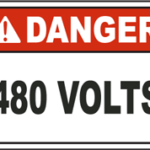 |
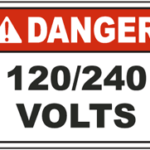 |
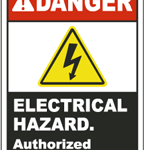 |
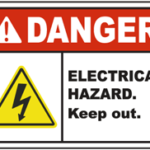 |
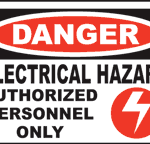 |
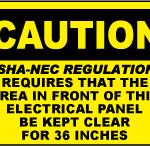 |
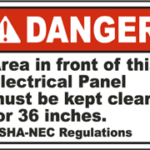 |
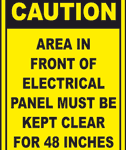 |
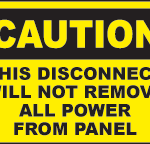 |
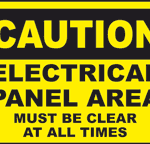 |
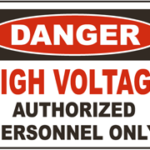 |
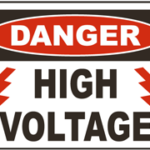 |
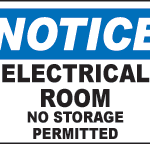 |
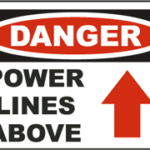 |
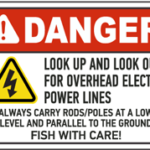 |
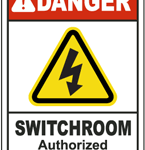 |
